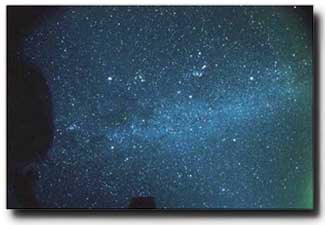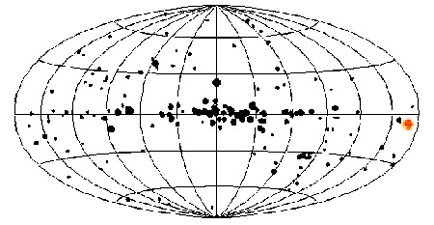Imagine the Earth in its place in the Milky Way. You are standing on the Earth looking out into space. The night sky arcs over the planet. You are in awe of the vastness of space. You try to identify the constellations, and then you wonder, "Where are all those stars located? How far are they from me?"

The Milky Way
Suppose you are looking directly at the Milky Way galaxy. You are looking at the galactic plane. Imagine a flying saucer. It looks like a disk with a bulge in the middle. This is basically the shape of the Milky Way galaxy. The galactic plane is the part of the Milky Way which is in the "saucer" part of the shape. Much of what you see in the night sky is on the galactic plane of the Milky Way. This is because these stars are closer to us than stars in other galaxies; therefore, they seem brighter.

The Need For Maps
Do you ever wonder, when you are looking at a twinkle in the night sky, if the light you see is a nearby and relatively faint star or if it is very far away and very very big and bright? It is impossible to tell just by looking. We must use maps and guides to find out exactly where the stars are located. Lets find out how these maps work.
Look at the black and white map of the universe below. This map is very confusing, whether you realize it or not. It represents the entire universe on a flat screen. How is that possible? The universe is not flat!



